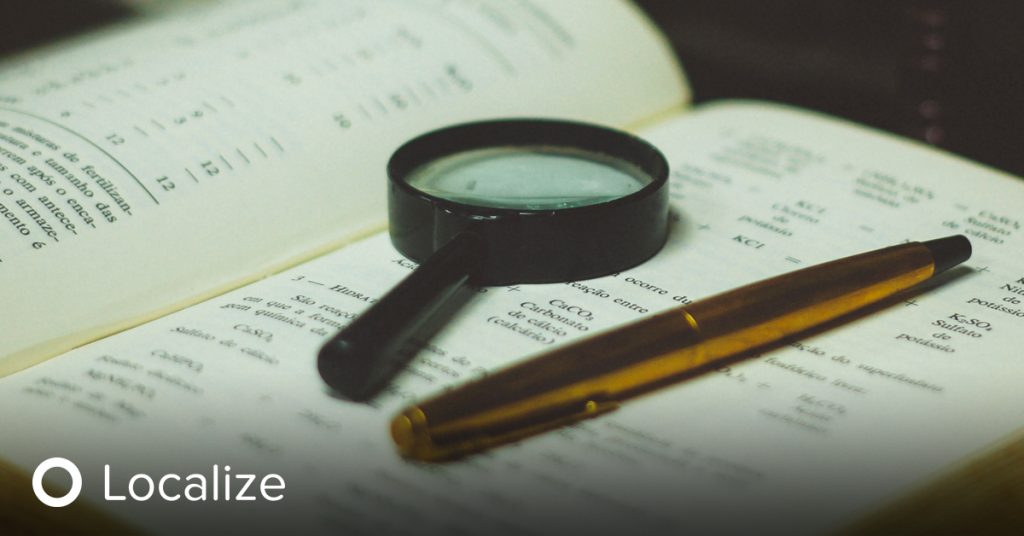When localization is done well, translating your SaaS website or web app into a new language can be a big boost for your global business. But a low-quality translation can have the opposite effect.
Here’s an example: Back in the ’80s, fast-food giant KFC reportedly mistranslated their famous slogan in Chinese: “Finger-licking good” somehow became “Eat your fingers off.”
In the age of the internet, translation mistakes like this are even more widespread. Unintentionally funny mistranslations can be hilarious, but they might make your brand go viral for all the wrong reasons.
Let’s go over the most common translation errors, and how to avoid them.
Types of Translation Errors
-
Grammar and Syntax Errors
Different languages have unique grammar and syntax rules. While translating, translators must remember differences in spelling, subject-object-verb agreement, and sentence construction. Sometimes, regional differences can change the way that syntax and grammar operate.
For example, both the US and UK speak the same language, but there are multiple differences in grammar, syntax, spelling, and vocabulary. In American English, collective nouns are considered singular, like the band is playing. But it’s more common to use the plural form in British English: the band are playing.
-
Mistranslations
Mistranslations are often a result of a lack of research. This can happen due to oversight or lack of knowledge on part of the translator. Local differences need to be considered while translating. Translating the wrong word—like saying ‘tram’ instead of ‘train’—can be a costly mistake if the target country doesn’t have a tram service. Translators should also look out for false friends—words in different languages that have a similar form but different meaning, like English “rope” and Spanish “ropa” (‘clothes’).
-
Inconsistent Translation
Some inexperienced translators may have trouble keeping a consistent tone of voice. This can lead to mistakes and translation errors. Improper use of tone, incorrect use of slang and idioms, and wrong placement of words can lead to inconsistency in translated material.
If the source text is a formal academic paper, for example, the tone of the words in the translation should be professional and formal. Informal language isn’t a good fit for technical material.
-
Cultural Differences
Language can’t be accurately interpreted or translated without context. Around the world, each language has a unique interpretation according to its people’s way of thinking, local history, living style, and geographic position. For example, the meaning of the word “desert” is completely different to the Maya (an open field) than it is to Palestinians (a dry, sandy area). Inadequate knowledge of cultural differences can lead to mistranslation.
-
Localization of Language
Not accounting for language differences can lead to translators using the wrong words in the wrong places. This can lead to multiple errors and detract from the quality of the translated piece.
Certain words do not have an equivalent in another language. For example, the Japanese use the word “Yūgen,” which means “a profound, mysterious sense of the beauty of the universe … and the sad beauty of human suffering.” There’s no word for this in English.
-
Missing Context
Another translation problem is a lack of context. Some translators and machine translation tools rely on literal, word-for-word translation. But this can be a mistake.
The meaning of a word or phrase varies depending on the situation or the arrangement of words in a sentence. Whether you’re “running” a meeting or “running” a marathon, your translators must know the exact context of the word “run” to understand the different meanings. Without good context, your translators may make more mistakes.
-
Jargon
Even if you hire the most experienced LSP (language service provider), most translators won’t automatically understand niche subject matter. You shouldn’t expect translators to understand corporate jargon, insider terminology, or industry-specific acronyms. Overuse of jargon like this can lead to translation mistakes.
-
Machine Translation
Although machine translation (MT) has made some incredible advances with natural language processing (NLP), it’s still not completely accurate. If you use a tool like Google Translate for your translation projects, errors are inevitable. Some language pairs have notoriously poor translation quality, even with the latest innovations in AI.
-
Errors in Source Text
To build a quality translation, translators need to have something good to work with. If your source text is poor quality, the translations will be low quality, too. All source material should be proofread thoroughly. And any confusing or tricky words and phrases should be replaced with simpler wording for an international target audience.
-
Slang, Idioms, and Expressions
Slang and figures of speech can be especially tough to translate. For example, if we tell someone not to get “cold feet,” we’re not talking about their state of mind–not their footwear. A literal translation won’t make our meaning clear. A professional translator will need to know the local language to create a good substitute for a phrase like this. For example, they could use “don’t get nervous” instead of the English source, “don’t get cold feet.”
Ways to Reduce Translation Errors
Post-edit your machine translations
Machine translations can be inaccurate sometimes. Before you publish, be sure to hire a human post-editor or utilize a team member to do a quality check of any machine-translated content.
Pay attention to the nuances of the language
Learning and understanding the grammatical and syntax differences between languages will help translators avoid simple errors. Additionally, avoiding literal translations will help preserve the integrity of the work.
Do thorough research
Reading books, listening to audio files, perusing grammar books, and even observing body language will help translators understand what words and sentences mean. This will help translators get a better picture of the way language is used in a particular country and it will help reduce errors due to mistranslation and misuse of words.
Proofread thoroughly
Reading and re-reading the material will help translators spot mistakes and identify any inconsistencies in the translation. Translators should also add end-notes post-translation to help readers understand what a word means or why it has been used. This will improve overall quality.
Use quality assurance tools
Quality tools such as spellchecker can help identify errors at a much faster rate for both the source and translated content. These tools will help translators identify which parts of the translation is below the level of acceptance. Additionally, having a dedicated team of quality assurance professionals will help ensure the quality of the final translated material.
Manage terminology and style
To maintain high-quality translations, use style guides, glossaries, and translation memory to keep translations consistent. This helps ensure that all your translators are following the same rules and quality standards for your brand across all your target languages.
Translation Made Easy with Localize
Ready to go global with your website or app?
Localize is a no-code translation management system (TMS) translation solution for SaaS platforms, allowing you to easily translate your web app, dashboard, API docs, Statuspage, and much more.
With hundreds of language pairs, just 3 easy steps, and no technical knowledge required, you can translate your SaaS platform in minutes.
With built-in style guides, translation memory, and quality controls, we’ll make sure your translations are error-free and professional every time. To learn more, reach out to us today!







